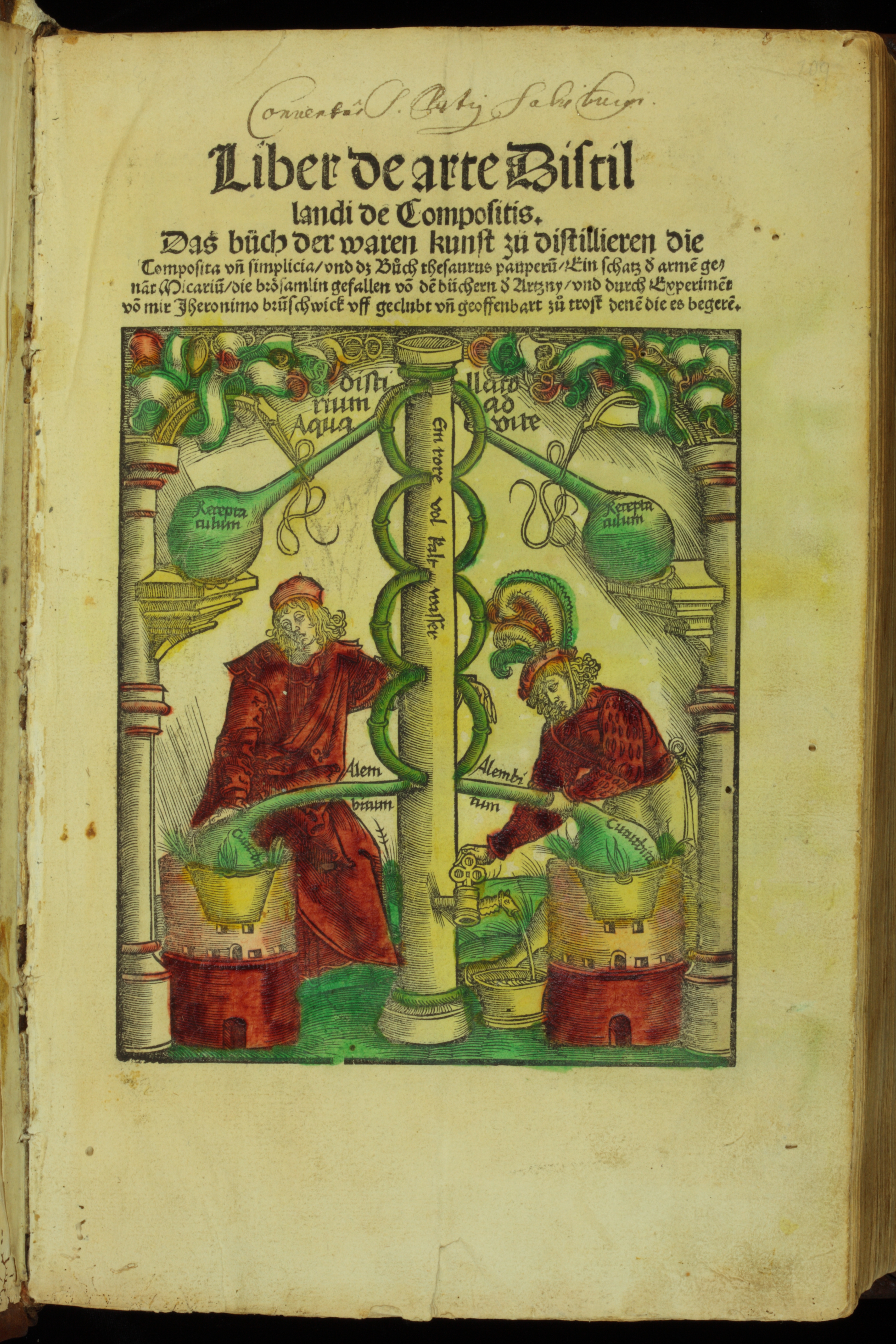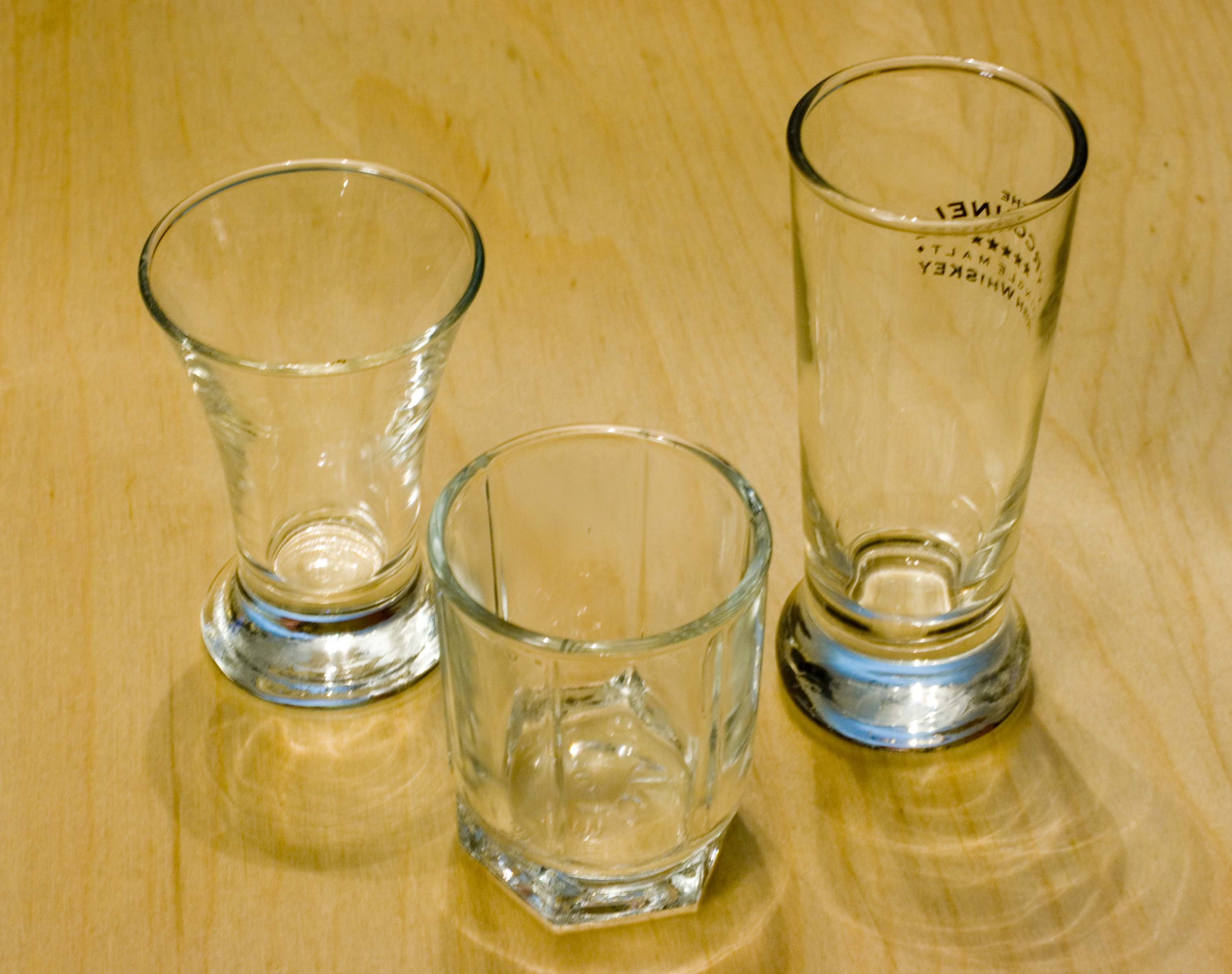|
Akvavit
''Akvavit'' or ''aquavit'' (; also ''akevitt'' in Norwegian; ''aquavit'' in English) is a distilled spirit that is principally produced in Scandinavia, where it has been produced since the 15th century. ''Akvavit'' is distilled from grain or potatoes, and is flavoured with a variety of herbs. It is also popular in Northern Germany. ''Akvavit'' gets its distinctive flavour from spices and herbs, and the dominant flavour must (according to the European Union) come from a distillate of caraway and/or dill seed. It typically contains 40% alcohol by volume or 80 proof (U.S.) The EU has established a minimum of 37.5% ABV for ''akvavit'' to be named as such. Etymology The word ''aquavit'' derives from the Latin ''aqua vitae'', "water of life." Compare the words ''whisky'' or ''whiskey'', from Gaelic ''uisce beatha'', which has the same meaning. Likewise, clear fruit brandy is called ''eau de vie'' ( French for "water of life"). Drinking culture Akvavit is an important part of Nordic d ... [...More Info...] [...Related Items...] OR: [Wikipedia] [Google] [Baidu] |
Fennel
Fennel (''Foeniculum vulgare'') is a flowering plant species in the carrot family. It is a hardy, perennial herb with yellow flowers and feathery leaves. It is indigenous to the shores of the Mediterranean but has become widely naturalized in many parts of the world, especially on dry soils near the sea-coast and on riverbanks. It is a highly flavorful herb used in cooking and, along with the similar-tasting anise, is one of the primary ingredients of absinthe. Florence fennel or finocchio (, , ) is a selection with a swollen, bulb-like stem base that is used as a vegetable. Description ''Foeniculum vulgare'' is a perennial herb. It is erect, glaucous green, and grows to heights of up to , with hollow stems. The leaves grow up to long; they are finely dissected, with the ultimate segments filiform (threadlike), about wide. (Its leaves are similar to those of dill but thinner.) The flowers are produced in terminal compound umbels wide, each umbel section having 20–5 ... [...More Info...] [...Related Items...] OR: [Wikipedia] [Google] [Baidu] |
Caraway
Caraway, also known as meridian fennel and Persian cumin (''Carum carvi''), is a biennial plant in the family Apiaceae, native to western Asia, Europe, and North Africa. Etymology The etymology of "caraway" is unclear. Caraway has been called by many names in different regions, with names deriving from the Latin ''cuminum'' ( cumin), the Greek ''karon'' (again, cumin), which was adapted into Latin as ''carum'' (now meaning caraway), and the Sanskrit ''karavi'', sometimes translated as "caraway", but other times understood to mean "fennel".Katzer's Spice PagesCaraway Caraway (''Carum carvi'' L.)/ref> English use of the term caraway dates to at least 1440, possibly having Arabic origin.Walter William Skeat, Principles of English Etymology, Volume 2, page 319. 189Words of Arabic Origin/ref> Description The plant is similar in appearance to other members of the carrot family, with finely divided, feathery leaves with thread-like divisions, growing on stems. The main flow ... [...More Info...] [...Related Items...] OR: [Wikipedia] [Google] [Baidu] |
Potato
The potato is a starchy food, a tuber of the plant ''Solanum tuberosum'' and is a root vegetable native to the Americas. The plant is a perennial in the nightshade family Solanaceae. Wild potato species can be found from the southern United States to southern Chile. The potato was originally believed to have been domesticated by Native Americans independently in multiple locations,University of Wisconsin-Madison, ''Finding rewrites the evolutionary history of the origin of potatoes'' (2005/ref> but later genetic studies traced a single origin, in the area of present-day southern Peru and extreme northwestern Bolivia. Potatoes were domesticated there approximately 7,000–10,000 years ago, from a species in the ''Solanum brevicaule'' complex. Lay summary: In the Andes region of South America, where the species is indigenous, some close relatives of the potato are cultivated. Potatoes were introduced to Europe from the Americas by the Spanish in the second half of the 16 ... [...More Info...] [...Related Items...] OR: [Wikipedia] [Google] [Baidu] |
Aqua Vitae
''Aqua vitae'' (Latin for "water of life") or aqua vita is an archaic name for a concentrated aqueous solution of ethanol. These terms could also be applied to weak ethanol without rectification. Usage was widespread during the Middle Ages and the Renaissance, although its origin is likely much earlier. This Latin term appears in a wide array of dialectical forms throughout all lands and people conquered by ancient Rome. The term is a generic name for all types of distillates, and eventually came to refer specifically to distillates of alcoholic beverages (liquors). ''Aqua vitae'' was typically prepared by distilling wine and in English texts was also called ardent spirits, spirit of wine, or spirits of wine, a name that could be applied to brandy that had been repeatedly distilled. The term was used by the 14th-century alchemist John of Rupescissa, who believed the then newly discovered substance of ethanol to be an imperishable and life-giving "fifth essence" or '' quint ... [...More Info...] [...Related Items...] OR: [Wikipedia] [Google] [Baidu] |
Helan Går
Helan går is a popular Swedish language, Swedish drinking song, or snapsvisa. ''Helan'' ("the whole") is an expression signifying the first (small) glass of spirit (commonly akvavit or vodka) in a series, and ''går'' means "goes (down)"; loosely translated as, "Bottoms up!" Thus, it is commonly sung as a toast, typically for the first glass of spirit at a seated dinner. The song has also become quite common in Finland, especially at academic dinners. When Sweden's ice hockey team won the 1957 World Ice Hockey Championships in Moscow, not all of the Swedish players knew the lyrics to ''Du gamla, du fria'', the de facto Swedish national anthem, so the players sang ''Helan går'' instead. The song's origin is uncertain because it is rarely noted in historical documents. One early mention occurs in an operetta in 1843. Several composers have written variations of the melody, including Franz Lehár. In 1959 The Belafonte Folk Singers recorded ''Heylan Går'' on the album ''Drinking ... [...More Info...] [...Related Items...] OR: [Wikipedia] [Google] [Baidu] |
Dill
Dill (''Anethum graveolens'') is an annual herb in the celery family Apiaceae. It is the only species in the genus ''Anethum''. Dill is grown widely in Eurasia, where its leaves and seeds are used as a herb or spice for flavouring food. Growth Dill grows up to , with slender hollow stems and alternate, finely divided, softly delicate leaves long. The ultimate leaf divisions are broad, slightly broader than the similar leaves of fennel, which are threadlike, less than broad, but harder in texture. The flowers are white to yellow, in small umbels diameter. The seeds are long and thick, and straight to slightly curved with a longitudinally ridged surface. Etymology The word ''dill'' and its close relatives are found in most of the Germanic languages; its ultimate origin is unknown. The generic name ''Anethum'' is the Latin form of Greek ἄνῑσον / ἄνησον / ἄνηθον / ἄνητον, which meant both 'dill' and 'anise'. The form ''anīsum'' came to be used fo ... [...More Info...] [...Related Items...] OR: [Wikipedia] [Google] [Baidu] |
Shot Glass
A shot glass is a glass originally designed to hold or measure spirits or liquor, which is either imbibed straight from the glass ("a shot") or poured into a cocktail ("a drink"). An alcoholic beverage served in a shot glass and typically consumed quickly, in one gulp, may also be known as a "shooter". Shot glasses decorated with a wide variety of toasts, advertisements, humorous pictures, or other decorations and words are popular souvenirs and collectibles, especially as merchandise of a brewery. Name origin The word ''shot'', meaning a drink of alcohol, has been used since at least the 17th century, while it is known to have referred specifically to a small drink of spirits in the U.S. since at least the 1920s. The phrase ''shot glass'' has been in use since at least the 1940s. Earliest shot glasses Some of the earliest whiskey glasses in America from the late 1700s to early 1800s were called "whiskey tasters" or "whiskey tumblers" and were hand blown. They are th ... [...More Info...] [...Related Items...] OR: [Wikipedia] [Google] [Baidu] |
Nordic Countries
The Nordic countries (also known as the Nordics or ''Norden''; literal translation, lit. 'the North') are a geographical and cultural region in Northern Europe and the Atlantic Ocean, North Atlantic. It includes the sovereign states of Denmark, Finland, Iceland, Norway and Sweden; the autonomous administrative division, autonomous territories of the Faroe Islands and Greenland; and the autonomous region of Åland. The Nordic countries have much in common in their way of life, History of Scandinavia, history, religion and Nordic model, social structure. They have a long history of political unions and other close relations but do not form a singular entity today. The Scandinavism, Scandinavist movement sought to unite Denmark, Norway and Sweden into one country in the 19th century. With the dissolution of the union between Norway and Sweden (Norwegian independence), the independence of Finland in the early 20th century and the 1944 Icelandic constitutional referendum, this move ... [...More Info...] [...Related Items...] OR: [Wikipedia] [Google] [Baidu] |
Drinking Culture
Drinking culture is the set of traditions and social behaviors that surround the consumption of alcoholic beverages as a recreational drug and social lubricant. Although alcoholic beverages and social attitudes toward drinking vary around the world, nearly every civilization has independently discovered the processes of brewing beer, fermenting wine and distilling spirits. Alcohol and its effects have been present in societies throughout history. Drinking is documented in the Hebrew and Christian Bibles, in the Qur'an, in art history, in Greek and Roman literature as old as Homer and in Confucius's ''Analects''. Social drinking "Social drinking", also commonly referred to as "responsible drinking", refers to casual drinking of alcoholic beverages in a social setting without an intent to become intoxicated. In Western cultures, good news is often celebrated by a group of people having a few alcoholic drinks. For example, alcoholic drinks may be served to "wet the baby's head ... [...More Info...] [...Related Items...] OR: [Wikipedia] [Google] [Baidu] |
Aquavit Schweden , a Scandinavian restaurant in New York
{{disambig ...
Aquavit may refer to: * Aqua vitae, Latin for "water of life", a concentrated alcoholic distillate * Akvavit, a Scandinavian distilled beverage * Okovita, a historic Polish-Ukrainian term for an alcoholic drink related to vodka * Restaurant Aquavit Aquavit is a Scandinavian restaurant located at 65 East 55th Street in Midtown Manhattan, New York City. In November 2016, an outpost was launched in London by Philip Hamilton. History Aquavit was created and opened by Håkan Swahn in 1987. and ... [...More Info...] [...Related Items...] OR: [Wikipedia] [Google] [Baidu] |
Snapsvisa
A snapsvisa (Swedish, plural: snapsvisor) is a traditional Scandinavian drinking song, which is often sung before drinking a small shot of spirit that is called a ''snaps''. A typical snapsvisa is a short, vigorous song; its lyrics usually tell of the delicacy and glory of the drink, or of the singer’s craving for snaps. Snapsvisor are short, bright, and easy to learn. The most well-known snapsvisa in Sweden is Helan Går. Snapsvisor are an important part of traditional and family festivities in Sweden, Norway, Denmark, and among Swedish-speaking Finns. The singing of these drinking songs is also a lively part of Scandinavian student culture. In some cases universities even have detailed explanations for foreign students on how to sing during formal dinners. They are also widespread among monolingually Finnish students in Finland, although they are rarely met with elsewhere in Finnish drinking culture. See also *Drinking culture *Drinking song *Snaps *Helan går Helan går ... [...More Info...] [...Related Items...] OR: [Wikipedia] [Google] [Baidu] |





